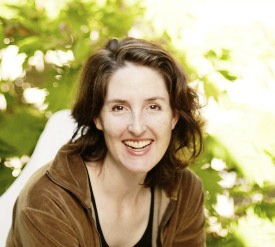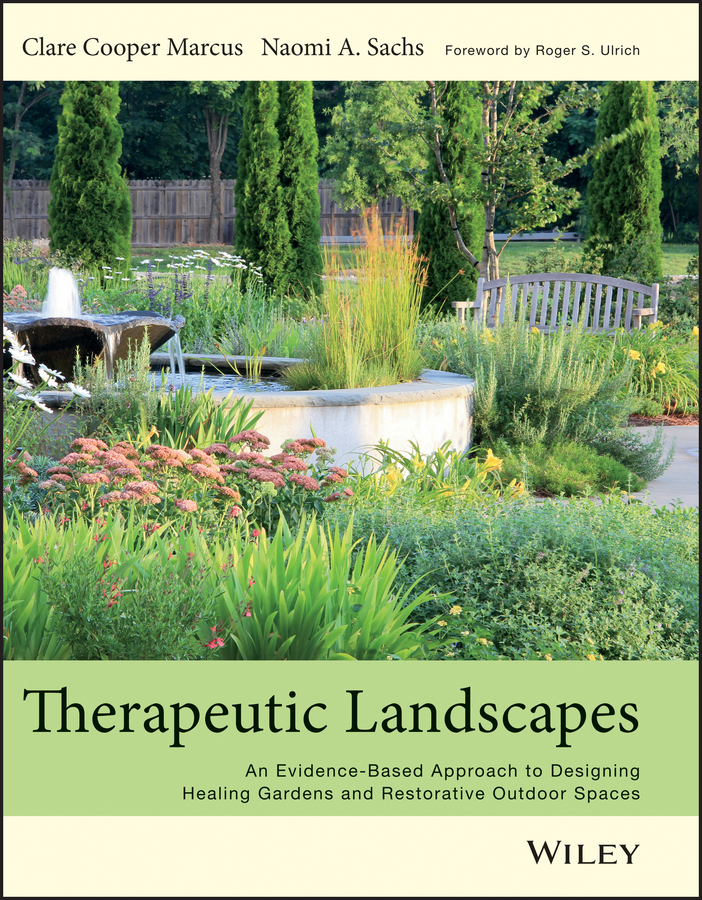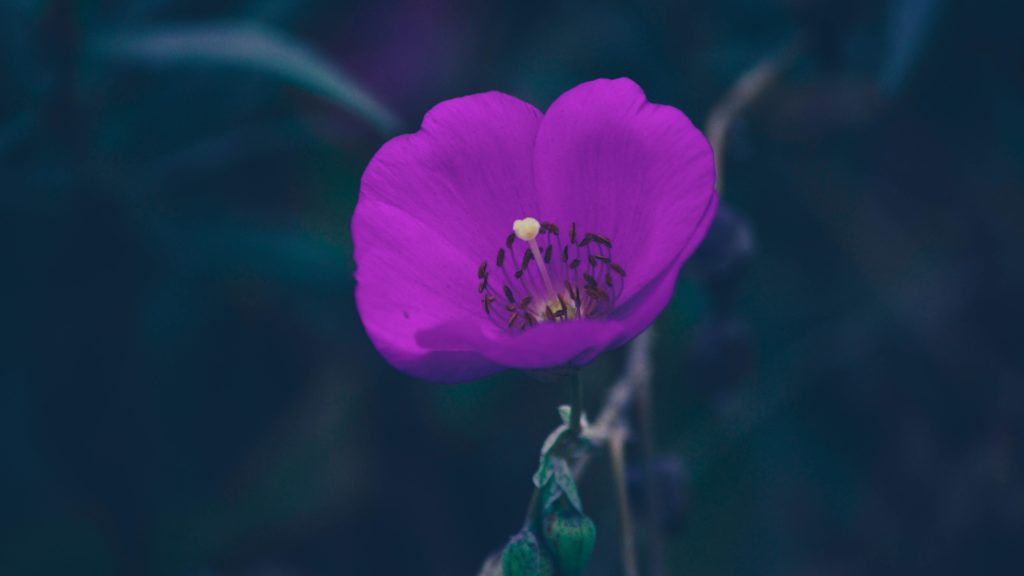Taking time to get in tune with your surroundings and learn to love nature has proven a therapeutic process for many, including Naomi Sachs. Sachs is Founding Director of the Therapeutic Landscapes Network and writes the corresponding blog, but has taken the research on connections between healing and nature a step further in her latest project.

She has been able to translate a personal passion for nature into a new book, co-written by Clare Cooper Marcus, which just came out this week called Therapeutic Landscapes: An Evidence-Based Approach to Designing Healing Gardens and Restorative Outdoor Spaces. The new publication has been long-anticipated and referenced as the “single most comprehensive and authoritative guide to designing healing gardens and restorative outdoor spaces.”
We were able to chat with Naomi around the release of her new book and discuss her work on this project and what she hopes the book can achieve for healthcare and design.
Open Voices: What led you to develop such a passion for studying the healing and restorative qualities of nature?
Naomi Sachs: I grew up in rural northeastern Connecticut, and like many children of my generation, spent much of my time outdoors. Some of my fondest memories are of walking in the woods, swimming in the Fenton River, playing neighborhood games of kick the can until well past dark, raking leaves and then jumping into them…the list goes on… I started noticing that whenever I worked in the garden, no matter how bad a day I was having, I felt better afterwards. Then I got a job working for a landscape designer, which I thoroughly enjoyed (even though it was very hard, physical labor). I happened upon the 1995 issue of Landscape Architecture magazine about healing gardens, which I’d never heard of before, and it clicked: THAT’S what I want to do!
I took classes in garden design, horticultural therapy, and landscape architecture at RISD, Radcliffe College, and the University of Rhode Island, and decided to focus on LA. UC Berkeley was my first choice because of the College of Environmental Design’s focus on social factors relating to human health (sadly, their focus has changed). Clare Cooper Marcus, Randy Hester, Walter Hood, Louise Mozingo, and others had a reputation for passion around this subject. When I first met Clare, she was working with Marni Barnes on Healing Gardens (1999) and she asked me to write the chapter on psychiatric hospitals. A few months after graduation (also 1999) I founded the Therapeutic Landscape Network’s precursor, the Therapeutic Landscapes Database.
Open Voices: How have you seen the need for nature in people’s daily lives growing as we become more urban and technologically focused beings?
Sachs: I think that the more separate people get from the natural world, the more disconnected they become from themselves, each other, and other living things. I am not anti-technology. The TLN is largely web-based, and it’s fantastic to be able to connect people from all over the world around this common issue…But too much technology is not healthy. Though we rely heavily on machines, in a mostly urbanized world, we are still human beings and, like all other animals, we rely on fresh air, plants, water, and other living beings to survive and thrive. If we don’t strike a balance between the urban and the technical and the natural, we run the risk of losing our humanity, our health, and our sanity.
Open Voices: What was the most valuable thing you learned through the planning, research and writing for this book?
Sachs: I learned so much while working on the book, and it continues. I learned a lot about the nuts and bolts of publishing…Researching for the book—whether it was reading the most recent literature, or talking with practitioners, or visiting and writing about specific gardens – was educational, of course. But in addition, working on the book helped me to synthesize a lot of the research, theories, ideas, and concepts that have been rolling around in my head for so many years. This has laid a good foundation for my dissertation research. I suppose one very valuable thing has been my and Clare’s correspondence with so many people, from so many disciplines, who care about the connection between nature and health and who are hungry for information. There are also so many people who know a great deal, and we learned from all of them and got to share their knowledge in the book. That is very exciting and encouraging.
Open Voices: What do you think will be the most valuable part of the book for the public interested in the healing benefits of nature?
Sachs: The book is intended for a broad audience – designers; healthcare practitioners including horticultural, occupational, and physical therapists; healthcare administrators; funders/philanthropists; students and others in academia; and the lay person who wants to learn more about this subject. Different parts of the book will be valuable to different people. That being said, I think the general guidelines for healthcare gardens, as well as guidelines for specific patient and facility types (e.g., Alzheimer’s, cancer, children, hospice) will be very useful. Also, chapters on subjects that have not been covered before – such as gardens for veterans; the connection between therapeutic landscapes and sustainability; planting and maintenance; and the business case for access to nature in healthcare – will be of interest to a broad range of readers.

Open Voices: How do you hope to see the insights from this new book help other designers, urban planners, architects?
Sachs: Clare and I want healthcare facilities to include access to nature as an integral part of the design. And not just for individual gardens, but for the entire site, indoors and out, to be an environment that promotes health. We stress that designing access to nature must come at the beginning of a project rather than as an afterthought. For example, utilizing existing natural features; siting the building(s) for the best views, access to natural light, placement of gardens; and integrating the gardens with the buildings are all things that must happen very early on. We hope that the research and examples provided in the book help make a case for why this is important, and how it can be accomplished.
We have seen a trend of “healing gardens” becoming more accepted in healthcare facilities, which is wonderful, but often neither the administration nor the designer has a clear understanding of what sort of space that should be. It’s about so much more than a couple of benches and a patch of lawn or a few potted plants. Our book is intended to guide people in making design and programming decisions that will best benefit patients, visitors, and staff. Additionally, we are seeing a trend of hospitals and other healthcare facilities reaching out beyond their buildings or campus to the community. Our chapter on “restorative places in public spaces” focuses on larger outdoor spaces – sometimes affiliated with a healthcare facility, sometimes not – that are designed for health and well-being. It’s a new paradigm that is referred to as “salutogenic design” – design that promotes health rather than just addressing injury and illness. Salutogenic design can be considered on all levels, from gardens in healthcare to public parks, to entire cities.

